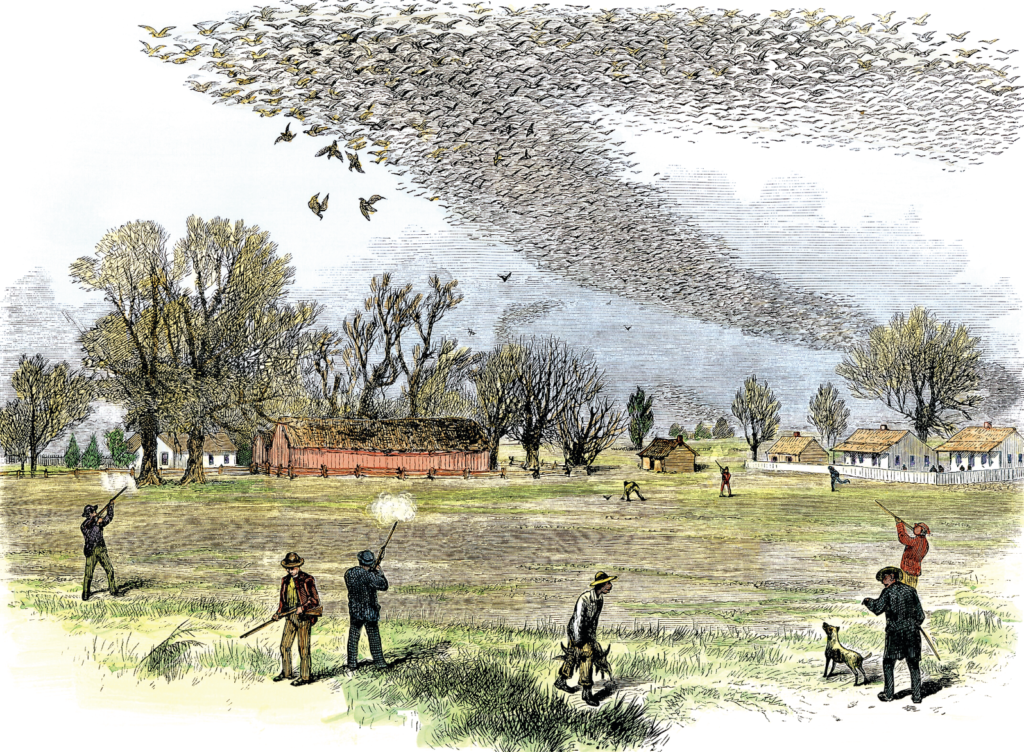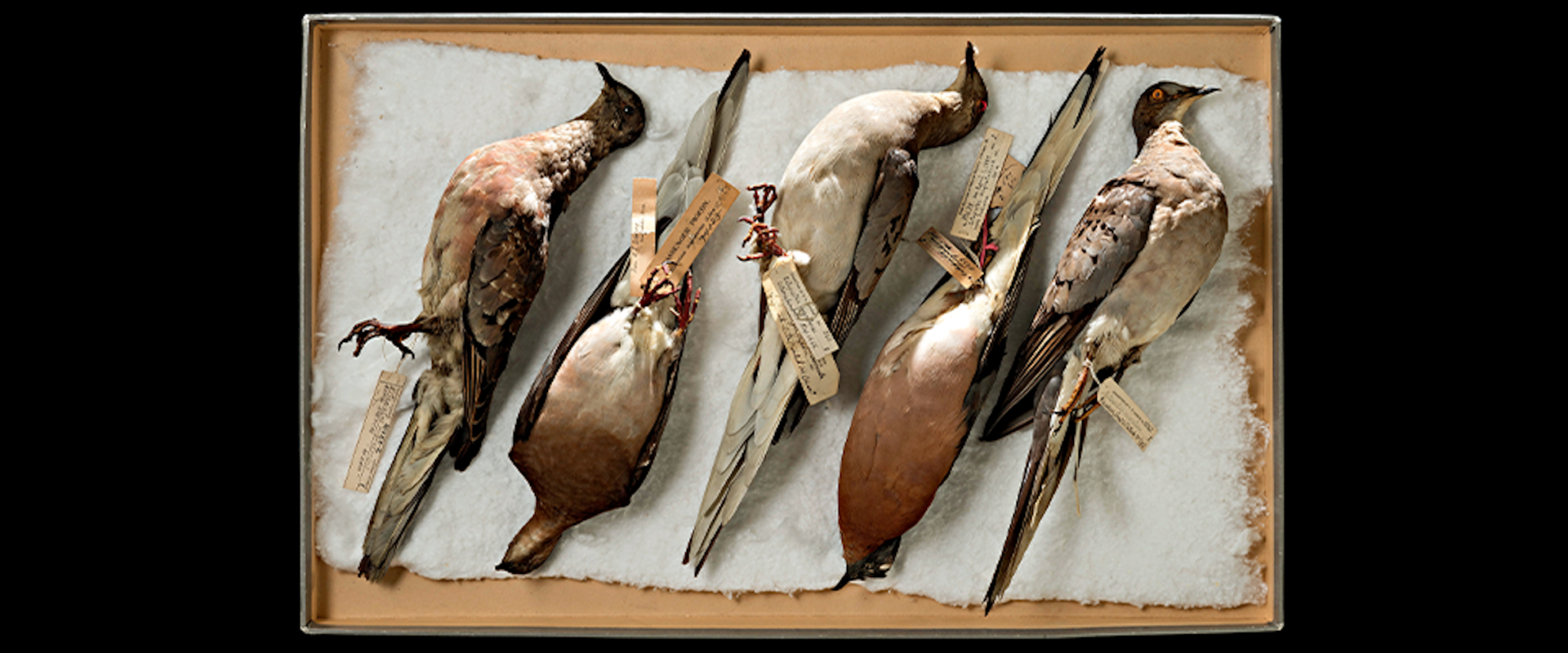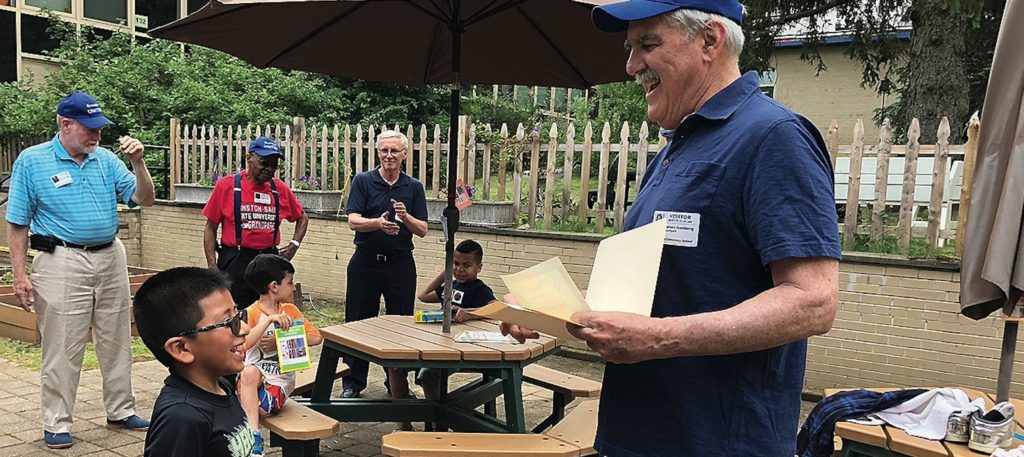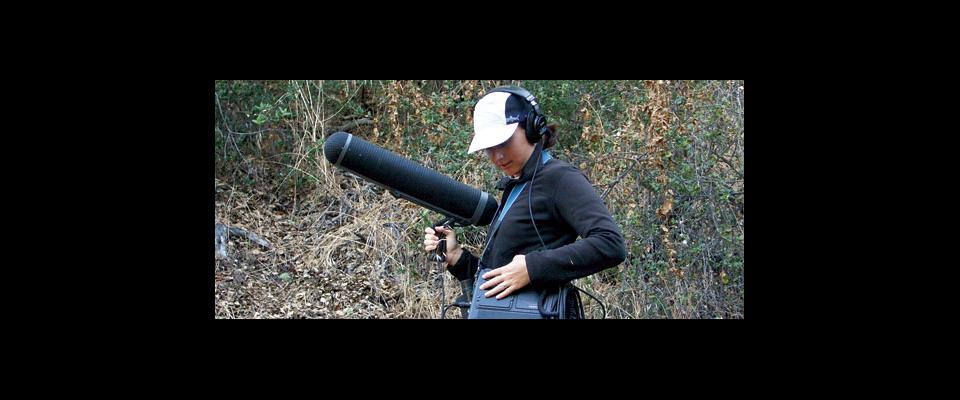THE MOST BELOVED BIRD IN HISTORY may very well have been a 29-year-old pigeon by the name of Martha. It was the early 1900s, shortly before the United States entered the First World War, and Martha was at the height of her fame. Perched on her humble roost at the Cincinnati Zoo, she was an object of fascination to the thousands of visitors who lined up just to catch a glimpse. With her muddy-gray plumage and mottled wings, Martha may not have looked the part of an animal celebrity, but she was hardly average—in fact, she was the very definition of one of a kind. After the death of her companion George in 1910, Martha had become the world’s last-living passenger pigeon.
There was a time not long before when her kind accounted for more than a quarter of the birds in North America and may have been the most abundant bird species on the planet. Named for their migratory behavior, they flew in enormous, almost biblical, masses that could take days to pass overhead and were known to darken the entire sky. “The air was literally filled with Pigeons,” recalled prominent naturalist John James Audubon about a flock numbering in the billions. “The light of noon-day was obscured as by an eclipse; the dung fell in spots, not unlike melting flakes of snow.”
Traveling at 60 miles an hour in flocks a mile wide and 300 miles long, the mere sound of the pigeons’ passing inspired whisperings of apocalypse. Witnesses compared it to stampeding horses or a train rumbling through a tunnel. Livestock scattered, children ran home, adults dropped to their knees and prayed. In their wake, the passenger pigeons left a path of tornado-like destruction: toppled trees, razed crops, droppings several inches thick. They were a terrifying and seemingly indestructible force of nature. Until they weren’t.
Ironically, the passenger pigeons’ very abundance may have spelled their demise. An agricultural pest and reliable source of protein, they became easy targets for hunters who slaughtered them in the tens of thousands, sometimes simply by swatting at them with poles. By the late 1800s, hunting pigeons had become a booming business that was aided by two new technologies: the telegraph and the railroad. In a matter of decades, a bird that once numbered in the billions was reduced to a few captive flocks—and then, eventually, to one.
Martha, who’d grown up in captivity, had no offspring of her own. So desperate were her caretakers to continue her lineage that they offered a $1,000 reward to anyone who could find her a viable mate. None succeeded.
At 1 p.m. on September 1, 1914, Martha fell from her perch, never to rise again—one of the rare occasions in which historians could pinpoint the exact moment of a species’ extinction. An obituary in the New York Tribune read:
“A keeper making his daily visit to the bird’s cage found that the thread by which life had hung for weeks had snapped, and forthwith the news was sent out over the wires of the great press associations, for the loss of Martha, last of a vanished race, was as interesting to the world in some respects as the death of a potentate.”
Of course, the real tragedy was that the loss of the passenger pigeon was neither surprising nor unique. For as long as the Earth has sustained life—some 3.5 billion years—so too has it seen the permanent disappearance of life forms, the dinosaurs being a particularly extreme example. But Martha’s high-profile death trained national attention on an alarming new—and, until then, largely ignored—trend. More recently dubbed the “sixth mass extinction,” our modern, human-dominated era has been marked by an acceleration in species loss. Close to a thousand animal species alone have died off in the last 500 years, and the prognosis is only getting worse. We even have a word for animals like Martha: “endling,” meaning the last of her kind.
The years leading up to Martha’s death marked a shift in the country’s attitude toward endangered species. In 1900, Republican Congressman John F. Lacey of Iowa helped pass the Lacey Act, the nation’s first wildlife protection law. “We have given an awful exhibition of slaughter and destruction, which may serve as a warning to all mankind,” he said on the House floor, lamenting the passenger pigeon’s impending extinction. “Let us now give an example of wise conservation of what remains of the gifts of nature.” That was followed, in 1913, by the Weeks-McLean Act to regulate the hunting and selling of migratory birds, which in turn was replaced by the even stricter Migratory Bird Treaty Act. But in terms of staving off more extinctions, legislation has come up woefully short. In her 2015 Pulitzer Prize–winning book, The Sixth Extinction: An Unnatural History, environmental journalist Elizabeth Kolbert writes that current models predict the loss of up to half of all living species in the next century.
And yet something else has changed too. For as long as we’ve hunted, exploited, and otherwise driven plants and animals to oblivion, we’ve accepted the irreversibility of this damage. That harsh reality is in the name itself—“extinct,” which comes from the Latin word extinctus, as in “put out” or “extinguished.” As in, it would take an act of God to relight.
Well, humans have never shied away from playing God.

Passenger pigeon Martha might be the most beloved bird in history. (Courtesy of Enno Meyer, Passenger Pigeon, Smithsonian Institution Libraries)
A century after Martha died and was promptly frozen, stuffed, and placed on display at the National Museum of Natural History, we’re preparing to strike the proverbial match. “De-extinction,” as it’s somewhat flippantly called, has been the subject of much scientific inquiry, not to mention speculative fiction over the last few decades. “God creates dinosaurs, God kills dinosaurs, God creates man, man kills God, man brings back dinosaurs,” Michael Crichton famously wrote in his novel Jurassic Park. In the 30 years since his prescient observation, audacious projects to bring back the likes of woolly mammoths, Tasmanian tigers, and, yes, passenger pigeons, have only accelerated. Unlike in Crichton’s cautionary novel, however, proponents of de-extinction aren’t aiming to create biological spectacles but are promising, instead, a new era of species revival in the name of ecology.
As noble as that may sound, it raises many difficult questions: Which species should get a second chance? How do we make sure the world we’re bringing them into is better than the one they left? And, perhaps most troubling of all: Should we be playing God?
IN 2005, A YOUNG, AMBITIOUS MOLECULAR BIOLOGIST packed his bags and moved halfway around the world to Leipzig, Germany. Richard “Ed” Green had just finished his Ph.D. at Berkeley and was off to join Svante Pääbo at the Max Planck Institute. Pääbo, a Swedish geneticist who completed a postdoc at Berkeley, was leading cutting-edge research in the study of ancient genes, or paleogenetics. And Green wanted to help.
Hoping to make an impression on the boss, Green took it upon himself to try sequencing the genome of the cave bear and mammoth, species that vanished millennia ago—and succeeded. “We were directly sequencing DNA from these bones that were tens of thousands of years old,” says Green, who discovered a field ripe for technological development. He ultimately became part of the team that pieced together the first draft of a Neanderthal genome and co-founded his own Paleogenomics Lab at UC Santa Cruz. There, he and collaborator Beth Shapiro began applying the same techniques he helped pioneer in Germany to an ambitious new venture: reconstruction of the passenger-pigeon genome.
Resurrection wasn’t the goal. As far as Green and Shapiro were concerned, the project was about rebuilding and studying the genetic code of a long-lost, poorly understood bird. New insights, they hoped, could help solve the mystery of the pigeons’ sudden decline, perhaps revealing genetic quirks that, in addition to hunting and other human pressures, may have made them susceptible to population collapse. In 2010, using samples from the toe pad tissue of nine preserved specimens housed in the Royal Ontario Museum, they put together the first large DNA data set—one step toward a full genome.
Meanwhile, 80 miles north of Santa Cruz, on a houseboat in the quaint, waterside town of Sausalito, a new idea was brewing in the minds of two illustrious futurists, Ryan Phelan and her husband, Stewart Brand.
The fact is, humans have made a huge hole in nature in the last 10,000 years. We have the ability now, and maybe the moral obligation, to repair some of the damage.
A self-described serial entrepreneur, Phelan found quite a match in Brand, creator of the Whole Earth Catalog and a key player in everything from the Acid Tests of the ’60s to the personal computer revolution of the ’80s and ’90s. Phelan, who graduated from Cal in 1974, had been Brand’s intellectual and romantic partner for nearly four decades. At the time, she was in the process of selling her genetics company, DNA Direct, and looking for a new project when they got to talking with Harvard geneticist George Church about the future of genetic technology.
“The three of us got going about how it could actually impact conservation,” remembered Phelan, who wears her long blonde hair loose around her neck, on a Zoom call this summer. A series of three-way conversations revealed a shared curiosity about the promise of de-extinction—with Church focused on the woolly mammoth and Brand on the passenger pigeon. On February 8, 2012, they convened a dozen experts, including UC Santa Cruz paleogeneticist Beth Shapiro, for their first official meeting in Church’s lab at Harvard. “De-extinction went from concept to potential reality right before our eyes,” Phelan later told the New York Times.
That first meeting led to a second, bigger meeting in October of 2012, this time hosted at the National Geographic Society headquarters in Washington, D.C., and bringing together everyone from representatives of major conservation NGOs to Sergey Zimov, a founder of the Woolly Mammoth Revival Project at Pleistocene Park in Siberia. Phelan says it was at that meeting that they decided to share their idea with the world, “to actually broaden it to include other stakeholders, including the public, and get word out that there’s a group thinking about all this.” And somewhere along the line, she says, they coined the name Revive & Restore, “with the idea that any work that we would do would never be just simply about reviving an extinct species as a curiosity; it would be about restoring an ecosystem.”
The following spring, in March of 2013, a landmark conference was jointly hosted by the National Geographic Society and Phelan’s newly founded nonprofit, Revive & Restore. Stewart Brand himself kicked off the event, “TEDxDeExtinction,” with a dramatic talk titled “The Dawn of De-extinction. Are You Ready?” which formally announced their mission to bring back the passenger pigeon. Loftily christened “The Great Passenger Pigeon Comeback,” the project encapsulated the visionaries’ grand ambitions: More than de-extinction, Brand promised a chance at atonement for our past sins. “The fact is, humans have made a huge hole in nature in the last 10,000 years. We have the ability now, and maybe the moral obligation, to repair some of the damage.”
And so, a year short of the 100th anniversary of Martha’s death, de-extinction took the national stage. “What do people think about it?” Brand asked the audience. “Do you want extinct species back?” The applause was tentative.
WHEN UC SANTA BARBARA ECOLOGY PROFESSOR Douglas McCauley ’01 first heard about de-extinction, around five years ago, it all seemed to him theoretical at best.
“I’d seen some tidbits of reporting in the news out of the corner of my scientific eye about developments in de-extinction.” At first, he says, “my assessment of the science … was that it was more in the state of, ‘Can we do this?’” But when the International Union for Conservation of Nature’s newly formed De-extinction Task Force published a 2016 report outlining their “Guiding Principles on Creating Proxies of Extinct Species for Conservation Benefit,” he knew the science was getting serious. “For me, it became important to ask, ‘Should we do this?’”
McCauley, who received a dual B.A. in integrative biology and political science from Berkeley, describes himself as a “broadly trained ecologist” on the lookout for “better tools to do a better job with conservation.” After stints as a deckhand on a fishing boat and as a wildlife manager for the U.S. Fish and Wildlife Service, he settled at UC Santa Barbara, where he built a career applying cutting-edge technology to conservation efforts. “I realized that I was just not getting enough of the picture, or solving enough of these problems, using traditional tools,” he told Vice in 2017.

A passenger pigeon flock being hunted in Louisiana, as depicted in Shooting and Dramatic News in 1875. (Wikimedia Commons)
For McCauley, who now directs the interdisciplinary Benioff Ocean Initiative, a nonprofit bringing solutions-oriented science to bear on crowdsourced conservation projects, the promise of de-extinction—a twenty-first-century solution to a centuries-old problem—had a certain appeal. But something concerned him. Entrepreneurs, rather than scientists, seemed to be controlling the narrative, and without a sufficiently critical lens.
Wanting to bring in the voices of genetic and conservation biologists, he gathered a few colleagues to talk it out over tea. “We had some reservations about these tools, but we decided, ‘Well, let’s lay those aside, let’s leave the ethics aside,’” he recalls. Diverging from the mainstream debate, which he says was consumed by methodology and morality, they took an agnostic approach, discussing how, ideally, to leverage this new tool for good. The result, published in August 2016 in Functional Ecology, was a rather unusual paper—a set of guidelines for doing ecologically meaningful de-extinction. Aptly titled “A Mammoth Undertaking,” it was in some ways the product of McCauley and his co-authors’ discomfort with the direction de-extinction efforts appeared to be going, particularly with regards to reviving the woolly mammoth. “It seemed like we were headed on a trajectory where we were making oddities for zoos rather than restoring ecosystem function.”
BY THE TIME MCCAULEY’S PAPER WAS PUBLISHED, the passenger pigeon de-extinction project was in full swing. Ed Green and his team at UC Santa Cruz had completed an important first step: sequencing the whole genome. Though officially published in 2017, the sequence was actually finished several years earlier, an accomplishment that Green describes as less of a eureka moment than a gradual unveiling. Even with well-preserved DNA samples from more than 40 passenger pigeon specimens, the researchers couldn’t simply stick it all back together—they needed a reference genome to figure out where all the pieces belonged. For that, they turned to the passenger pigeon’s closest living relative, the band-tailed pigeon.
“We use that as a scaffold to put together the genome of the passenger pigeon,” says Green. “It’s like the picture on the front of the puzzle box. It kind of tells you where everything goes.” To be clear, he wasn’t literally splicing together pieces of DNA, but rather a digital facsimile. “The end result of that is a computer file,” a sequence of A’s, C’s, T’s, and G’s. “It’s not an actual genome; it’s just knowledge of what that genome was.”
That said, successful reintroduction of keystone species would require that the ecosystem still exist to some degree. McCauley’s second rule: The best candidates for de-extinction are the recently extinct or even not-yet extinct.
The sequence represented the closest anyone had come to resurrecting the extinct bird. The next step—constructing a physical genome for breeding the first generation of baby passenger pigeons—would be a bit trickier. In fact, when the project first started, technological limitations might have made it nearly impossible. But the discovery of CRISPR/Cas9, by Berkeley chemist Jennifer Doudna and fellow Nobelist Emmanuelle Charpentier, has made gene editing faster and more accurate than ever before.
Described as “molecular scissors,” CRISPR allows scientists to make very precise cuts in DNA and insert new genetic material—a tool with obvious implications for de-extinction science. “The big-idea concept is that we take the genome of the band-tailed pigeon, or some close relative,” says Green, “and bit by bit, turn by turn, tweak this into a passenger pigeon. It would be like taking your Toyota and swapping out parts until you have a Honda—if Hondas were extinct.”
Green makes an important point: Rather than a true passenger pigeon, the final product of this revival project will be a sort of band-tailed-passenger hybrid. Similarly, the Woolly Mammoth Revival Project is planning to make what would be essentially a hairy, cold-adapted Asian elephant. Which raises interesting philosophical considerations. “If one starts deliberately walking away, genetically, from one species toward another species,” asks Green, “at what point have you walked far enough that you have a new species?” Hybridizing genetic cousins, it turns out, calls into question the very definition of a species. And, semantics aside, what if these Franken-animals don’t look, or behave, quite as expected?
As Green says, “We’ll find out when we make a passenger pigeon.”
FIVE YEARS AFTER THE PUBLICATION OF MCCAULEY’S PAPER, “A Mammoth Undertaking,” he feels more optimistic about the promise of de-extinction—if done well.
So, how would we do it well? In his paper, he articulates three main rules for proceeding. Rule number one: The species should be functionally unique.
“Not all species are created equal in the world of ecology,” he says. While some species have overlapping niches, others play a critical, and irreplaceable, role in their ecosystem. Hippos, for example, pump vital nutrients from the savannahs where they graze into the rivers where they bathe. An entire ecosystem rests on their ability to maintain this metabolic cycle. Passenger pigeons, it seems, fit this bill. As migratory birds, they aided in forest maintenance and may have contributed to seed dispersal as well. Turns out those massive flocks were more than just a public nuisance—by breaking branches and disturbing tree canopies, they supported a diverse and constantly regenerating habitat.
“It was an ecosystem engineer,” says Phelan of the pigeon, adding that, in its absence, native plant and animal species have declined, with certain habitats becoming more of a monoculture. For her, de-extinction isn’t about “going back to just some Romantic period in time. It is going back to what would be called a biodiverse and a bio-abundant nature.”
That said, successful reintroduction of keystone species would require that the ecosystem still exist to some degree. Which brings us to McCauley’s second rule: The best candidates for de-extinction are the recently extinct or even not-yet extinct.
“We use time as a proxy for ecosystem change,” McCauley explains. Woolly mammoths, who lived during the last glacial period, are a good example: Climate change contributed to their decline, and in the roughly 10,000 years since they went extinct, warming has continued to turn the vast grasslands into mossy tundra. Even passenger pigeons, only a century gone, would return to a world transformed.
“When the passenger pigeon was numbering in the billions,” he says, “the forests of the Eastern Seaboard of the United States looked vastly different. This was when we had large, dominant forests of chestnut, which—because of chestnut blight—have gone from numbering close to billions to being now closer to 100.” If American chestnut trees were a major source of food for the pigeons, could they survive a world without them? Passenger pigeons also required “enormous uninterrupted stands of tree canopy,” says paleogeneticist Ed Green. Without an environment that can support their needs, de-extincted species would, at best, end up as novelties in zoos. As McCauley puts it: “If there’s no place for animals to live, then what’s the point?”
Of course, not all ecosystems have changed to the point of being inhospitable to their former residents. Take Yellowstone’s gray wolf: In 1995, more than 60 years after the last gray wolf disappeared from the park, eight new individuals were relocated there from their home in Alberta, Canada. What followed was remarkable. Despite fears that the wolves would run rampant, killing local livestock or simply wandering back to their home up north, they stayed, and the park’s ecosystem benefited. Elk populations, which had begun to overrun the landscape, decreased, willow stands grew, and beavers flourished.
The wolf reintroduction project, which Phelan describes as “transformative,” made Yellowstone a bastion of conservation research and, for her, serves as an example of how well-managed reintroductions can be successful, even decades down the road.
“In species evolution and in Nature’s evolution, [100 years is] a blip in time,” Phelan says. And while there’s no doubt that the landscape has changed and ecosystems have been degraded considerably, the passenger pigeons would benefit from being what Ben Novak, lead scientist on the de-extinction project, calls “generalists”—well equipped to adapt to new forest compositions. Like Phelan, Novak believes their presence, like wolves in Yellowstone, would actually be restorative, helping to reverse the cycle of habitat degradation.
Of course, that kind of impact would require numbers. McCauley’s third and final rule is somewhat self-evident: Candidate species must be able to reach a population sizable enough to actually have an impact on the ecosystem. “Some of these functions and some of the things that species do are achieved by virtue of having large numbers,” says McCauley. “When you’re choosing candidates for de-extinction, you need to think about: Can you actually recover them to meaningful levels? If you can’t, perhaps you shouldn’t start.”
Abundance, of course, was one of the passenger pigeon’s defining characteristics. Assuming you could bring them back, what would it take to get their numbers to anything approaching their former bounty?
Abundance, of course, was one of the passenger pigeon’s defining characteristics. Assuming you could bring them back, what would it take to get their numbers to anything approaching their former bounty? A lot of time and resources, says Phelan. “We are strong believers in the need to do things incrementally. … There’s not going to be a moment when there are a billion passenger pigeons in the sky. There will be times when there’s a dozen in captivity, several dozen in captivity, a hundred in captivity. And we’ll start to see, what’s the impact and how does it work? And then we’ll go on to the next level.”
It’s worth noting that humans don’t exactly have a good track record when it comes to ecosystem interventions. Cane toads are a classic cautionary tale. Native to South and Central America, these warty amphibians were introduced to Australia in 1935 to control the beetles that were decimating Queensland’s sugarcane. It was a spectacular failure. The founding 102 cane toads swiftly multiplied to the thousands, then hundreds of thousands. Their present population somewhere around 200 million, cane toads are considered one of the world’s worst invasive species.
With the cane toad in mind, proceeding slowly with passenger pigeons would seem wise. Phelan agrees but also points to an exit strategy should things get out of hand. “There is a recall button if you need it. And it’s called hunting.”
FOR NOW, PROGRESS TOWARD A PASSENGER PIGEON is slow and uncertain. The effort is largely unfunded and mired in the technical challenge of engineering and implanting germ cells into a viable, surrogate parent.
Think of a Russian nesting doll: On the outside is the surrogate pigeon, and inside is a developing chick, whose gonads contain either sperm or eggs—each representing half of a future bird. By using CRISPR to genetically modify those germ cells, scientists can (theoretically) create a chick whose sperm or eggs carry the passenger pigeon genome. Breed two transgenic chicks and you’ve got yourself a full-blown passenger pigeon hybrid. Needless to say, this takes a few generations—and quite a bit of luck. Two years ago, Novak successfully implanted modified germ cells into a male surrogate, but only a few sperm contained the edited genes; the odds of that pigeon giving birth to a hybrid were 100,000 to 1. He’s currently working on producing better avian chimeras, with a goal to hatch the first generation of passenger pigeon chicks in the next seven to 12 years.
In the meantime, efforts are underway to learn more about the natural history of the passenger pigeon—where it lived, how it interacted with its environment—to inform best practices for breeding and eventual release.
If this all sounds like a lot of work, that’s because it is. Not only are these steps many years down the line, but the process will also look very different for each species. “These projects demonstrate, if nothing else, how hard it is to remedy the past mistakes,” says Phelan.
While there may be plenty of reasons why we shouldn’t pursue de-extinction, Phelan’s convinced by one compelling reason we should: We can’t afford not to.
And successfully remedying those mistakes could itself carry a risk; namely, that if we normalize de-extinction, we may unwittingly free ourselves from the responsibility for preventing further extinctions. This “moral hazard” is something McCauley takes very seriously.
“We also can’t forget our culpability in driving these extinctions in the first place,” he says. He worries that the shininess of a new tool like de-extinction science will distract from the gravity of the problem it seeks to solve. “We can create test-tube rhinos, we can create GMO ferrets. But unless we actually think about what was it that caused the rhinos and the ferrets to get close to extinction in the first place, these things coming out of our lab are not going to stand a chance for survival, and we’re going to see more species be pushed to the brink of extinction.”
For her part, Phelan is undeterred by such concerns. While there may be plenty of reasons why we shouldn’t pursue de-extinction, she’s convinced by one compelling reason we should: We can’t afford not to.
“There are problems right now that are so significant that the current conservation toolbox can’t solve,” says Phelan. “Inaction is an action that humans take when they feel paralyzed by the fear of intervention. And we can’t be paralyzed by fear.” She hopes that de-extinction will one day become commonplace—and that future generations, their skies periodically darkened by Martha’s feathered kin, will look back at today’s world as a blip in time, a few-hundred-years’ outlier of declining biodiversity.
It’s a grand vision. But not an impossible one.
“Today’s science fiction is tomorrow’s boring science. I would be shocked if it didn’t come to fruition,” says Ed Green. “It is far too late to start worrying about whether we are playing God or not—we’ve already done this. And one thing we definitely need to do differently is acknowledge what we’re doing and start taking responsibility.”
Leah Worthington is senior online editor of California and co-host of the magazine’s podcast, The Edge. Download episode 13 for more pigeon parley.






















